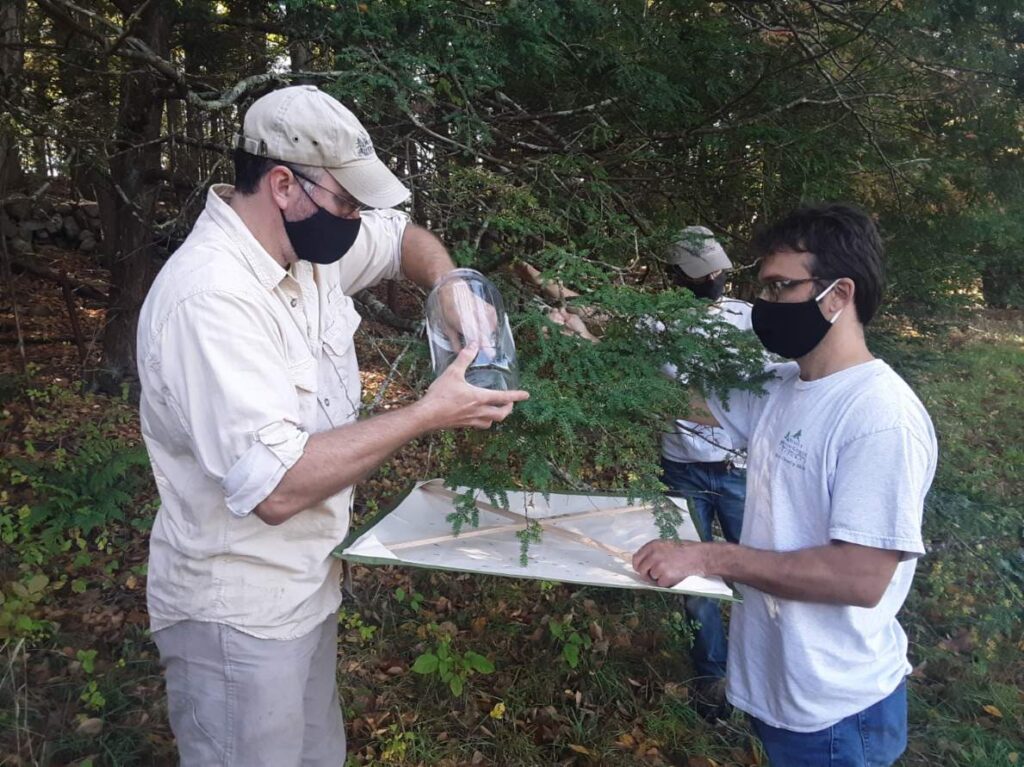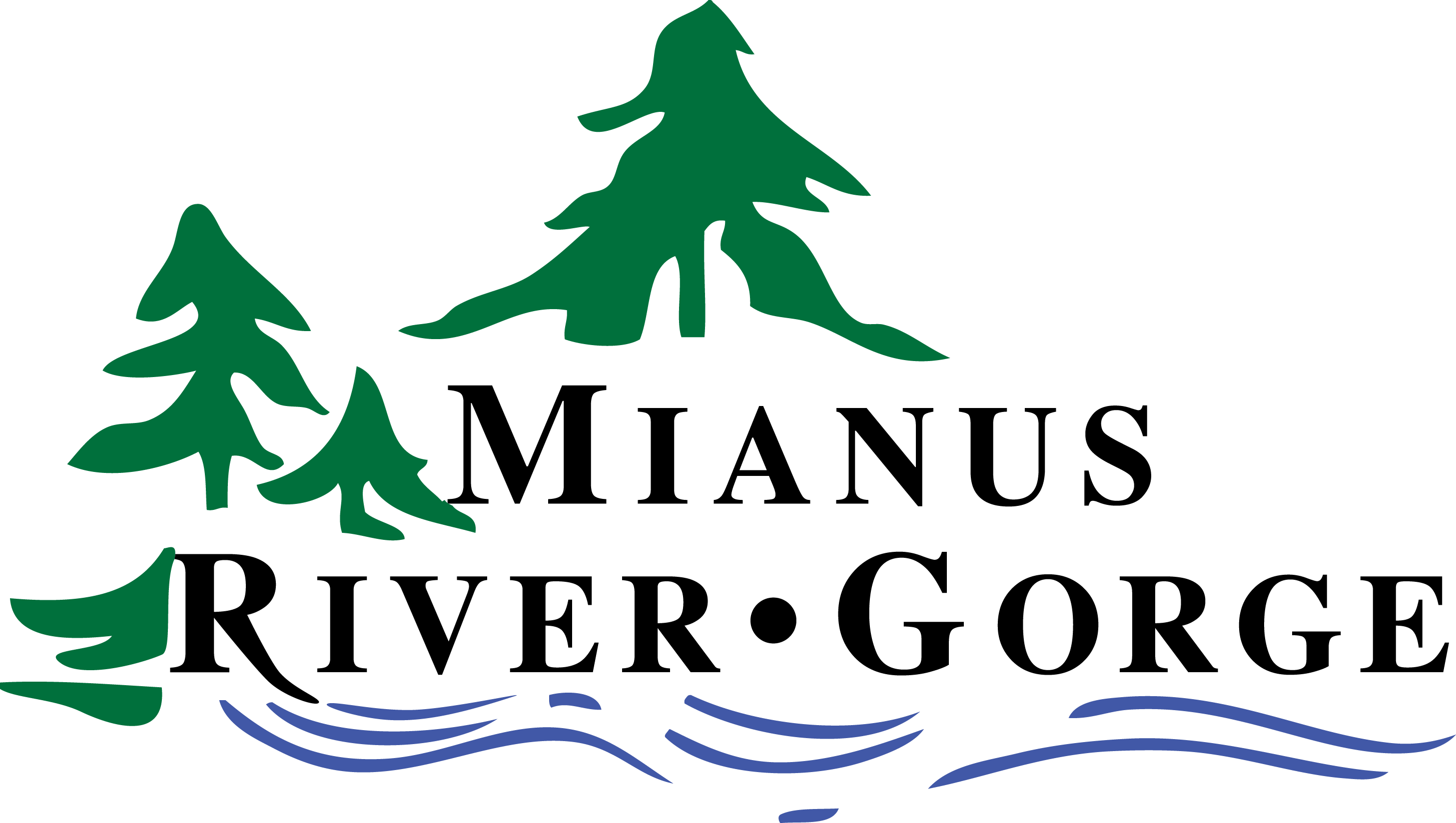From 2017 to 2019, MRG inoculated over 2,000 eastern hemlock trees against the hemlock woolly adelgid and hemlock scale.
Prior to resuming a schedule of repeated basal bark spraying in 2022, MRG scientists are participating in the New York State Hemlock Initiative to help establish a population of the Laricobius nigrinus beetle, a promising biocontrol that feeds on the hemlock woolly adelgid. In 2020, masked and socially distant, MRG staff and NYS Hemlock Initiative Field and Lab Technician Nick Dietschler headed into the forest to release a new batch of beetles. This beetle is a specialist predator that feeds exclusively on developing and adult woolly adelgid throughout the fall and winter months. A native to the Pacific Northwest, the hope is the Laricobius nigrinus beetle will thrive on the adelgids infesting eastern hemlocks as well as it has on its original source of food, the native woolly adelgids found on western and mountain hemlocks.
Mianus River Gorge is poised to begin the second round of the regimen conceived of by scientists at Cornell University’s Hemlock Initiative.
With your help, Mianus River Gorge can continue the important work of preventing the demise of this diverse forest that supports rare wildflowers, over 100 species of birds and over 30 species of mammals. As a donor to the “save the hemlocks campaign,” you will help protect one of the most diverse ecosystems in the region. Please consider a gift today that will have tremendous impact on every aspect of the forest ecosystem and ensure that it survives for future generations to enjoy. Click here to donate.
Visit https://blogs.cornell.edu/nyshemlockinitiative/ to learn more about the NYS hemlock initiative and biocontrols like the Laricobius nigrinus beetle.
Click here for further details about the importance of hemlocks, threats to the forest, and the strategy Mianus River Gorge is implementing to save this irreplaceable treasure.

